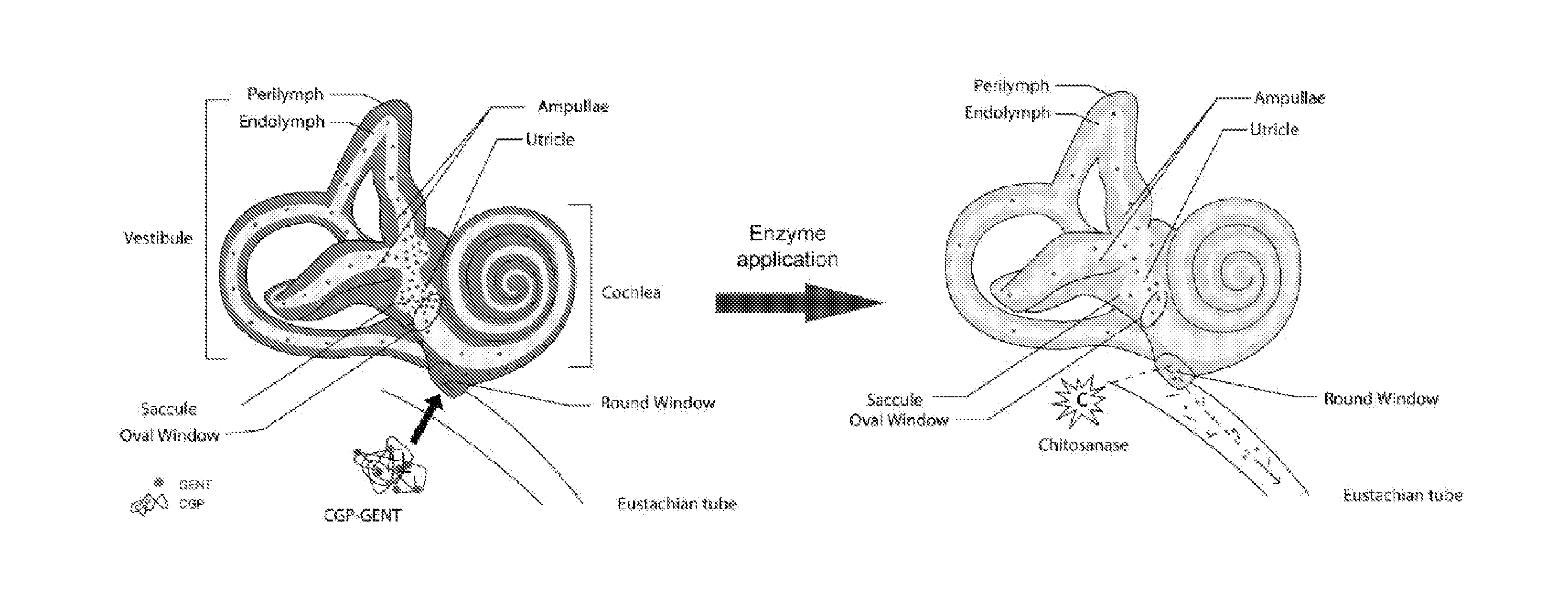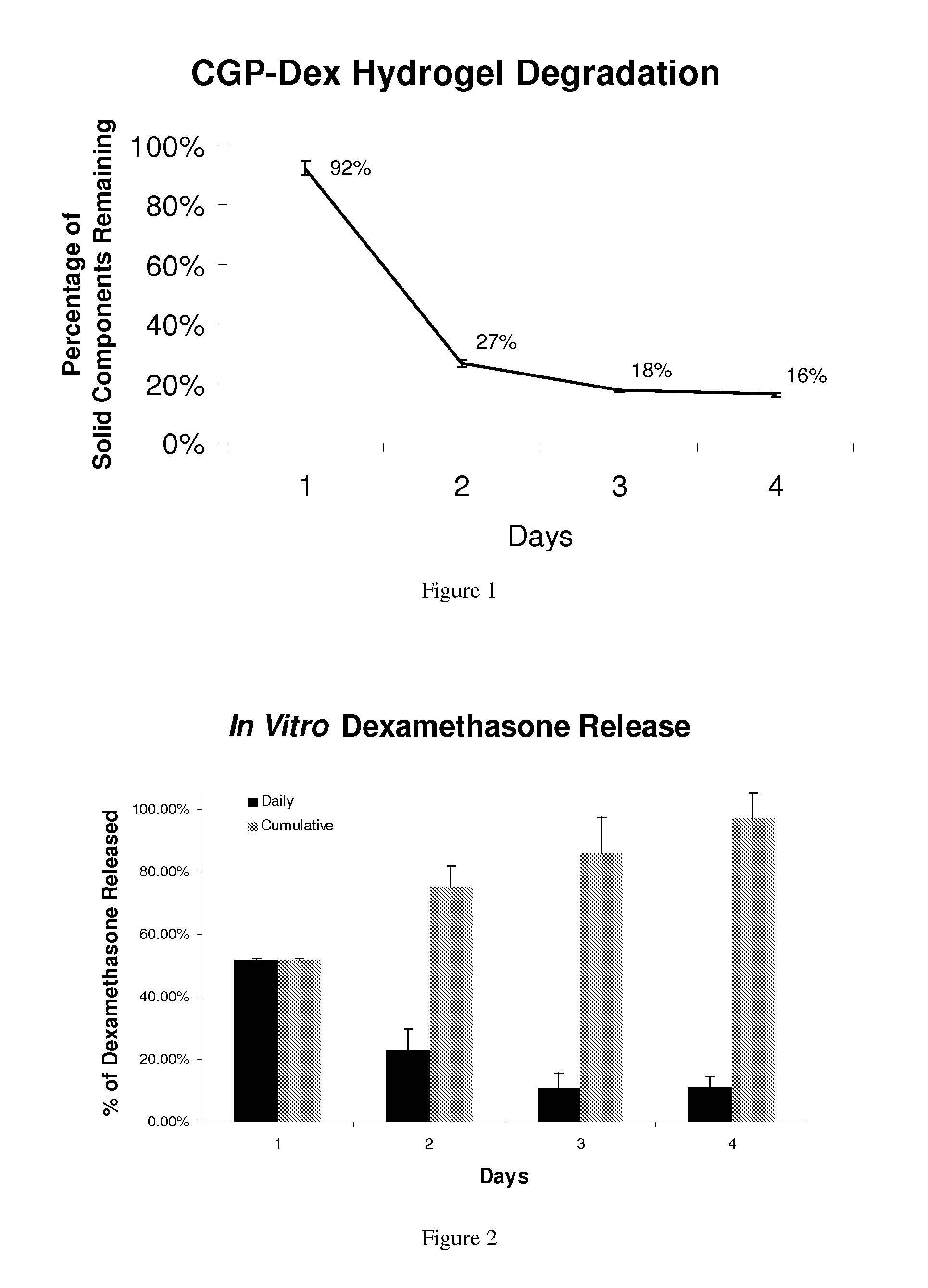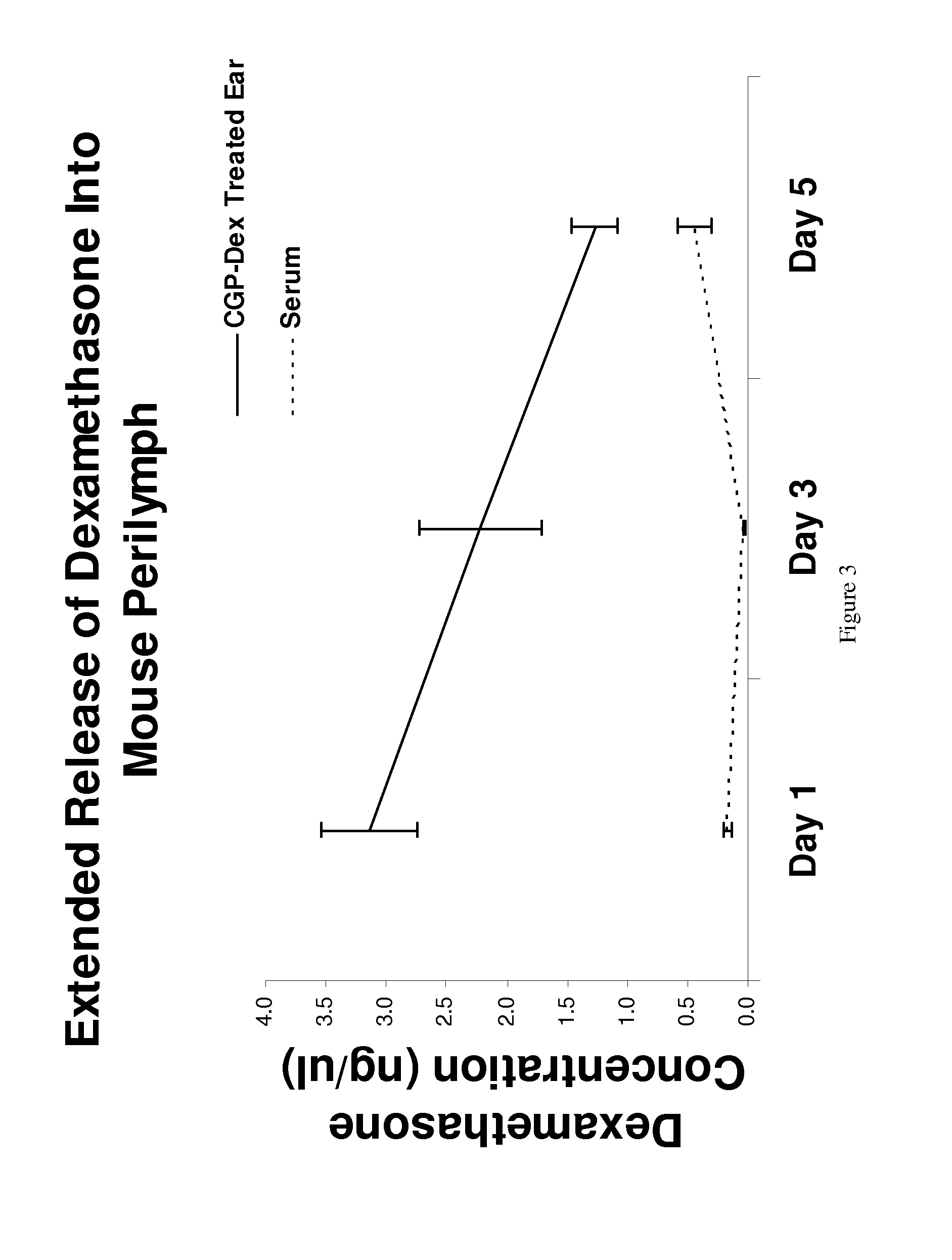Regulated delivery systems for inner ear drug application and uses thereof
a technology of inner ear drug application and delivery system, which is applied in the direction of drug composition, macromolecular non-active ingredients, peptide/protein ingredients, etc., can solve the problems of increased systemic toxicities and side effects, unsatisfactory systemic drug administration for focal disease of inner ear, and profound hearing loss in a significant proportion of patients
- Summary
- Abstract
- Description
- Claims
- Application Information
AI Technical Summary
Benefits of technology
Problems solved by technology
Method used
Image
Examples
example 1
In Vitro Matrix Degradation and Dexamethasone Release
[0113]Degradation of CGP-Dex-Hydrogel: In vitro experiments demonstrated that 92% of the solid hydrogel matrix remained at 24 hours and then slowly degraded to 16% of the original solid component by day 4. These experiments were duplicated and the average results were plotted (FIG. 1). Results were consistent between experiments with 2.6%0.02%.
[0114]Dexamethasone release from CGP-Dex-hydrogel: Sustained release of dexamethasone was observed over 4 days in vitro. In the first 24-hour period there was an initial bolus release of dexamethasone followed by a tapering of drug release until 100% of the drug was released by day 4. The experiment was repeated and the average results were plotted (FIG. 2). The initial bolus release of dexamethasone is likely due to the release of dexamethasone from the voids formed in the hydrogel matrix while the gel was solidifying. The dexamethasone released over the next 3 days represents drug that was...
example 2
In Vivo Dexamethasone Release and Auditory Function Assessment
[0115]CGP-Dex-Hydrogel Placement Procedure: Twenty five animals successfully underwent the procedure; 20 received CGP-Dex-hydrogel and 5 received no hydrogel injection (sham surgery). There were no surgical complications, the animals recovered normally and there were no infections. Following recovery and for the duration of the experiments, no animals exhibited signs of distress nor were there were no observable pathologic changes in behavior, such as log rolling or circling, indicating that both vestibular and auditory functions were preserved.
[0116]Perilymph and Serum Harvesting Procedures: The mean volume of perilymph harvested was 0.22 μL±0.07 μL. There were no statistical differences between groups or between the averages of all samples (p>0.05). Day 1: 0.25 μL±0.07 μL; Day 3: 0.20 μL±0.06 μL; Day 5: 0.22 μL±0.07 μL. The volume of serum harvested for each animal was 5 μL.
[0117]Dexamethasone Concentration in Perilymph...
example 3
A Regulated Delivery System for Inner Ear Drug Application
[0119]As shown in the previous examples above an inner ear drug delivery system using a chitosan glycerophosphate (CGP) hydrogel loaded with commonly used drugs for inner ear diseases and it significantly improved the drugs' sustained delivery. The goal of this study is to investigate if the sustained CGP inner ear drug delivery system can be regulated when side effects and potential ototoxicities appear during treatment. The novel delivery system was tested with the gentamicin inner ear application following CGP delivery with / without regulation. This study shows that that the chitosanase-based regulation system can be effectively used for controlled inner ear drug delivery. This system can stop inner ear drug application when side effects or drug-related ototoxicities start to occur and could be used for safe drug delivery for the inner ear application. Specifically, this system could act as an “off” switch for the CGP-hydro...
PUM
| Property | Measurement | Unit |
|---|---|---|
| molecular weight | aaaaa | aaaaa |
| temperature | aaaaa | aaaaa |
| w/w | aaaaa | aaaaa |
Abstract
Description
Claims
Application Information
 Login to View More
Login to View More - R&D
- Intellectual Property
- Life Sciences
- Materials
- Tech Scout
- Unparalleled Data Quality
- Higher Quality Content
- 60% Fewer Hallucinations
Browse by: Latest US Patents, China's latest patents, Technical Efficacy Thesaurus, Application Domain, Technology Topic, Popular Technical Reports.
© 2025 PatSnap. All rights reserved.Legal|Privacy policy|Modern Slavery Act Transparency Statement|Sitemap|About US| Contact US: help@patsnap.com



